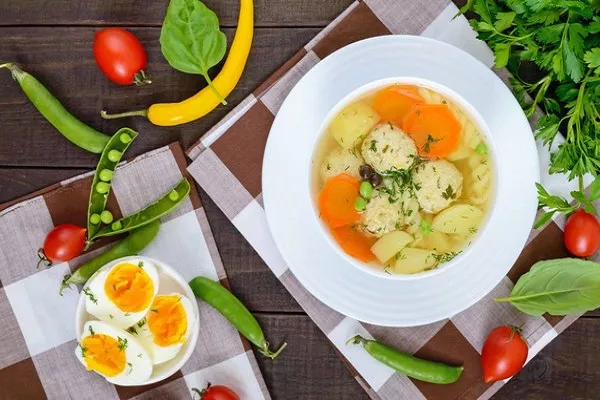In the fast-paced world of fitness, High-Intensity Interval Training (HIIT) has emerged as a powerhouse workout, offering time-efficient and effective results. However, the significance of post-HIIT nutrition is often underestimated. What you consume after a HIIT session plays a crucial role in maximizing benefits and aiding recovery. In this article, we’ll delve into the intricacies of post-HIIT nutrition, offering a detailed guide on what to eat after a high-intensity workout.
1. The Importance of Post-HIIT Nutrition
After an intense HIIT session, your body undergoes various changes, from depleted glycogen stores to micro-tears in muscle fibers. Proper nutrition is the key to replenishing energy, repairing tissues, and enhancing overall recovery. Let’s explore the essential elements of post-HIIT nutrition in detail.
a. Replenishing Glycogen Stores: HIIT heavily relies on glycogen for fuel. Consuming carbohydrates post-workout helps replenish these stores and kick-starts the recovery process. Opt for complex carbohydrates like whole grains, sweet potatoes, and quinoa.
b. Protein for Muscle Repair: Intense exercise breaks down muscle protein. Including a source of high-quality protein in your post-HIIT meal aids muscle repair and growth. Lean proteins such as chicken, fish, tofu, or plant-based alternatives like lentils and beans are excellent choices.
c. Hydration is Key: Sweating during HIIT leads to fluid loss, making rehydration crucial. Water is your best ally, but consider adding electrolyte-rich beverages to replenish lost minerals. Coconut water is a natural electrolyte source, aiding in rehydration and supporting muscle function.
2. Timing Matters: The Golden Window of Opportunity
Post-HIIT nutrition is not just about what you eat but also when you eat it. The golden window of opportunity, often within 30 minutes to an hour after your workout, is when your body is most receptive to nutrient absorption. Make the most of this window by planning your post-HIIT meal strategically.
a. Quick-acting Carbs: To rapidly replenish glycogen, opt for easily digestible carbohydrates. Fruits like bananas or berries are excellent choices, providing a quick energy boost without causing digestive discomfort.
b. Protein-Packed Snacks: Consuming a protein-rich snack or shake during this golden window ensures a swift supply of amino acids to your muscles. Greek yogurt with a handful of nuts or a whey protein smoothie are convenient and effective options.
3. Superfoods for Enhanced Recovery
Certain foods boast properties that can amplify your post-HIIT recovery. Incorporating these superfoods into your nutrition plan can provide an added edge to your workout results.
a. Turmeric for Anti-Inflammatory Benefits: The active compound in turmeric, curcumin, exhibits potent anti-inflammatory properties. Including turmeric in your post-HIIT meal can aid in reducing muscle soreness and inflammation.
b. Omega-3 Rich Foods: Foods like fatty fish (salmon, mackerel) or chia seeds, rich in omega-3 fatty acids, contribute to anti-inflammatory effects and support joint health, promoting overall recovery.
c. Dark Leafy Greens: Packed with vitamins and minerals, dark leafy greens like kale and spinach support immune function and provide antioxidants that combat exercise-induced oxidative stress.
4. Avoiding Pitfalls: What Not to Eat After HIIT
While emphasizing the importance of post-HIIT nutrition, it’s equally crucial to be aware of foods that may hinder your recovery efforts.
a. Excessive Sugars: While some carbohydrates are essential, excessive sugars can lead to an energy crash. Avoid sugary snacks or drinks, as they can counteract the positive effects of your workout.
b. Processed Foods: Highly processed foods are often laden with additives and preservatives. Opt for whole, nutrient-dense foods to ensure you’re getting the most out of your post-HIIT meal.
c. Insufficient Hydration: Inadequate fluid intake can hamper recovery and lead to dehydration. Ensure you are consistently hydrating throughout the day, especially after a HIIT workout.
Conclusion
In conclusion, post-HIIT nutrition is a critical component of a well-rounded fitness routine. By strategically selecting the right combination of carbohydrates, proteins, and superfoods, and timing your post-HIIT meal effectively, you can enhance recovery, reduce muscle soreness, and optimize the benefits of your high-intensity workouts. Remember, what you eat after a HIIT session is not just a meal; it’s a powerful tool to elevate your fitness journey. Embrace the science of nutrition, and watch your HIIT results reach new heights.
Related Links:
What should i eat to lose weight in 30 days
Unlocking the Secrets of Shedding Belly Fat with the Right Supplements
Unlock the Secret to Shedding Belly Fat with These 7 Super Fruits


